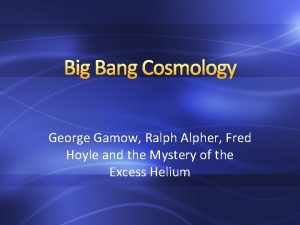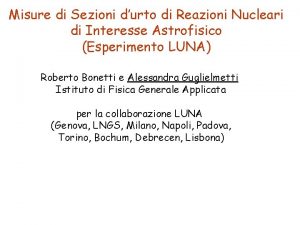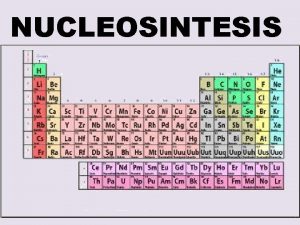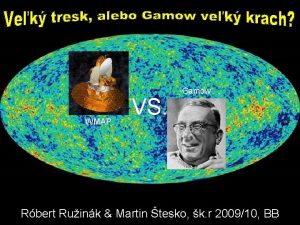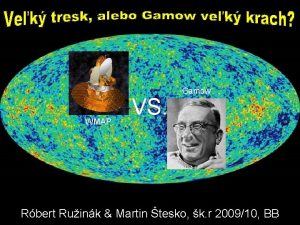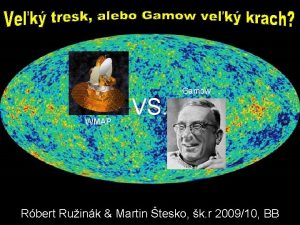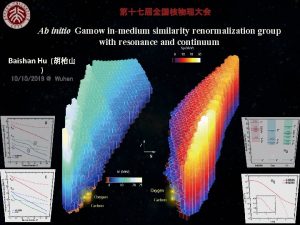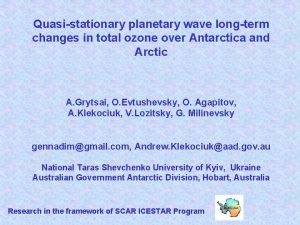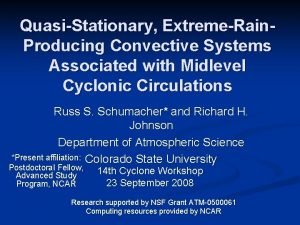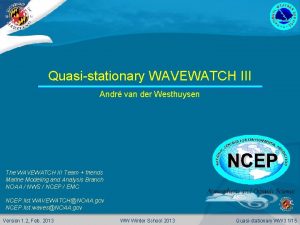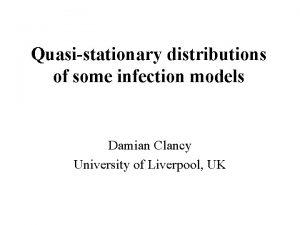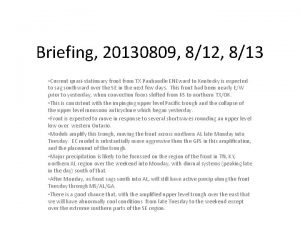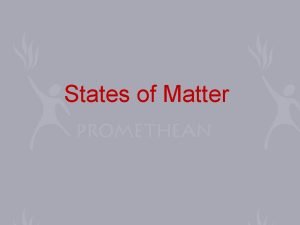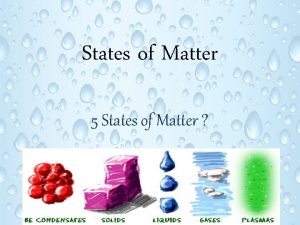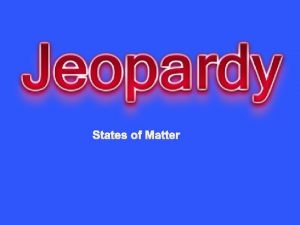Quasistationary states and Gamow states Quasistationary States For































- Slides: 31

Quasistationary states and Gamow states

Quasistationary States For the description of a decay, we demand that far from the force center there be only the outgoing wave. The macroscopic equation of decay is N is a number of radioactive nuclei, i. e. , number of particles inside of sphere r=R:

We should thus seek a solution of the form J. J. Thompson, 1884 G. Gamow, 1928 The time dependent equation relation between decay width and decay probability can be reduced by the above substitution to the stationary equation The boundary condition takes care of the discrete complex values of E

Since the energy E is complex, the momentum k is also complex. Asymptotically Therefore Looks scary but nothing to worry about! What is a physical interpretation of the asymptotic growth of the wave function at large r ? At any time t 0 we find at a given distance from the center those particles which were emitted at a previous time However, on the account of the exponential time dependence, the amplitude of the wave function at the center at the earlier time was greater than it is at t 0. Indeed (the exponential temporal decrease of the wave function amplitude is complemented by its exponential spatial increase, and the divergence of the resonance wave function assures that the particle number is conserved)

Consider potential scattering: What happens when ? Around Gamow state: How to define a resonance for real energies?

Outgoing flux and width of the Gamow state Humblet and Rosenfeld: Nucl. Phys. 26, 529 (1961) S can be taken as a sphere of radius R: An extremely useful expression!

In principle, resonances and decaying particles are different entities. Usually, resonance refers to the energy distribution of the outgoing particles in a scattering process, and it is characterized by its energy and width. A decaying state is described in a time dependent setting by its energy and lifetime. Both concepts are related by: This relation has been checked in numerous precision experiments. See more discussion in R. de la Madrid, Nucl. Phys. A 812, 13 (2008) U. Volz et al. , Phys. Rev. Lett 76, 2862(1996)

Rigged Hilbert Space: the natural framework to formulate quantum mechanics In mathematics, a rigged Hilbert space (Gel’fand triple, nested Hilbert space, equipped Hilbert space) is a construction designed to link the distribution and square-integrable aspects of functional analysis. Such spaces were introduced to study spectral theory in the broad sense. They can bring together the 'bound state' (eigenvector) and 'continuous spectrum', in one place. Mathematical foundations in the 1960 s by Gel’fand et al. who combined Hilbert space with theory of distributions. Hence, the RHS, rather than the Hilbert space alone, is the natural mathematical setting of Quantum Mechanics I. M. Gel’fand N. J. Vilenkin. Generalized Functions, vol. 4: Some Applications of Harmonic Analysis. Rigged Hilbert Spaces. Academic Press, New York, 1964. The resonance amplitude associated with the Gamow states is proportional to the complex delta function and such amplitude can be approximated in the near resonance region by the Breit-Wigner amplitude (Nucl. Phys. A 812, 13 (2008)): For a pedagogical description, see R. de la Madrid, Eur. J. Phys. 26, 287 (2005)

Theoretical Approaches

Continuum Shell Model -an old tool! • U. Fano, Phys. Rev. 124, 1866 (1961) • C. Mahaux and H. Weidenmüller: “Shell Model Approach to Nuclear Reactions” 1969 • H. W. Bartz et al. , Nucl. Phys. A 275, 111 (1977) • D. Halderson and R. J. Philpott, Nucl. Phys. A 345, 141 • … • J. Okolowicz, M. Ploszajczak, I. Rotter, Phys. Rep. 374, 271 (2003) Recent Developments: SMEC • K. Bennaceur et al. , Nucl. Phys. A 651, 289 (1999) • K. Bennaceur et al. , Nucl. Phys. A 671, 203 (2000) • N. Michel et al. , Nucl. Phys. A 703, 202 (2002) • Y. Luo et al. , nucl-th/0201073 Gamow Shell Model • N. Michel et al. , Phys. Rev. Lett. 89, 042502 (2002) • N. Michel et al. , Phys. Rev. C 67, 054311 (2003) • N. Michel et al. , Phys. Rev. C 70, 064311 (2004) • R. Id Betan et al. , Phys. Rev. Lett. 89, 042501 (2002) • R. Id Betan et al. , Phys. Rev. C 67, 014322 (2003) • G. Hagen et al, Phys. Rev. C 71, 044314 (2005) Other approaches


Complex Energy Treatment

Gamow states of a finite potential Unbound states Discrete (bound) states e. F n e. F p 0

Resonant (Gamow) states Also true in many-channel case! outgoing solution complex pole of the S-matrix • Humblet and Rosenfeld, Nucl. Phys. 26, 529 (1961) • Siegert, Phys. Rev. 36, 750 (1939) • Gamow, Z. Phys. 51, 204 (1928)

One-body basis Newton Berggren ensemble for a given jl channel: Berggren 1968

Gamow states and completeness relations T. Berggren, Nucl. Phys. A 109, 265 (1968); A 389, 261 (1982) T. Lind, Phys. Rev. C 47, 1903 (1993) Particular case: Newton completeness relation Contour is discretized Many-body Slater determinants (SD) are built GSM Hamiltonian matrix is computed and diagonalized (the matrix is complex symmetric!)

Selection of the many-body poles Resonances do not depend on the contour 4 neutrons in sd shell


Neutron halo density GSM+Vlow-k: G. Hagen et al. , Phys. Rev. C 73 (2006) 064307

Generalized Variational Principle (a complex extension of the usual variational principle) N. Moiseyev, P. R. Certain, and F. Weinhold, Mol. Phys. 36, 1613 (1978). N. Moiseyev, Phys. Rep. 302, 212 (1998) is stationary around any eigenstate That is, It should be noted that the complex variational principle is a stationary principle rather than an upper of lower bound for either the real or imaginary part of the complex eigenvalue. However, it can be very useful when applied to the squared modulus of the complex eigenvalue. Indeed,

Example: GSM+DMRG calculations for 7 Li J. Rotureau et al. , Phys. Rev. C 79, 014304 (2009)

Threshold anomaly E. P. Wigner, Phys. Rev. 73, 1002 (1948), the Wigner cusp G. Breit, Phys. Rev. 107, 923 (1957) A. I. Baz’, JETP 33, 923 (1957) A. I. Baz', Ya. B. Zel'dovich, and A. M. Perelomov, Scattering Reactions and Decay in Nonrelativistic Quantum Mechanics, Nauka 1966 A. M. Lane, Phys. Lett. 32 B, 159 (1970) S. N. Abramovich, B. Ya. Guzhovskii, and L. M. Lazarev, Part. and Nucl. 23, 305 (1992). • The threshold is a branching point. • The threshold effects originate in conservation of the flux. • If a new channel opens, a redistribution of the flux in other open channels appears, i. e. a modification of their reaction cross-sections. • The shape of the cusp depends strongly on the orbital angular momentum. Y(b, a)X X(a, b)Y a+X a 1+X 1 at Q 1 a 2+X 2 at Q 2 an+Xn at Qn

Threshold anomaly (cont. ) Studied experimentally and theoretically in various areas of physics: pion-nucleus scattering R. K. Adair, Phys. Rev. 111, 632 (1958) A. Starostin et al. , Phys. Rev. C 72, 015205 (2005) electron-molecule scattering W. Domcke, J. Phys. B 14, 4889 (1981) electron-atom scattering K. F. Scheibner et al. , Phys. Rev. A 35, 4869 (1987) ultracold atom-diatom scattering R. C. Forrey et al. , Phys. Rev. A 58, R 2645 (1998) Low-energy nuclear physics • charge-exchange reactions • neutron elastic scattering • deuteron stripping The presence of cusp anomaly could provide structural information about reaction products. This is of particular interest for neutron-rich nuclei

C. F. Moore et al. , Phys. Rev. Lett. 17, 926 (1966)

N. Michel et al. PRC 75, 0311301(R) (2007) WS potential depth decreased to bind 7 He. Monopole SGI strength varied 5 He+n 6 He Overlap integral, basis independent! 6 He+n 7 He Anomalies appear at calculated thresholds (many-body Smatrix unitary) Scattering continuum essential see also Nucl. Phys. A 794, 29 (2007)

Many-body OQS calculations correctly predict the Wignercusp and channel-coupling threshold effects. This constitutes a very strong theoretical check for the GSM approach. The spectroscopic factors defined in the OQS framework through the norm of the overlap integral, exhibit strong variations around particle thresholds. Such variations cannot be described in a standard CQS SM framework that applies a "one-isolated-state" ansatz and ignores the coupling to the decay and scattering channels. In the GSM model calculations, the contribution to SF from a non-resonant continuum can be as large as 25%.

• The non-resonant continuum is important for the spectroscopy of weakly bound nuclei (energy shifts of excited states, additional binding, …) • SFs, cross sections, etc. , exhibit a non-perturbative and non-analytic behavior (cusp effects) close to the particle-emission thresholds. These anomalies strongly depend on orbital angular momentum • Microscopic CSM (GSM) fully accounts for channel coupling Timofeyuk, Blokhintsev, Tostevin, Phys. Rev. C 68, 021601 (2003) Non-Borromean two-neutron halos

Complex Scaling Introduced in the early 1970 s in atomic physics to guarantee that wave functions and resonances are square integrable. Uniform complex scaling The transformed Hamiltonian is no longer hermitian as it acquires a complex potential. However, for a wide class of local and nonlocal potentials, called dilation-analytic potentials, the so-called ABC is valid: • The bound states of h and hq are the same; • The positive-energy spectrum of the original Hamiltonian h is rotated down by an angle of 2 q into the complex-energy plane; • The resonant states of h with eigenvalues En satisfying the condition |arg(En)|<2 q are also eigenvalues hq and their wave functions are square integrable.


Myo, Kato, Ikeda, PRC C 76, 054309 (2007)

Helium resonances in the Coupled Cluster approach and Berggren basis Complex coupled-cluster approach to an ab-initio description of open quantum systems, G. Hagen, D. J. Dean, M. Hjorth-Jensen and T. Papenbrock, Phys. Lett. B 656, 169 (2007)
 Ralph frenzel
Ralph frenzel Picco di gamow
Picco di gamow Fspos
Fspos Novell typiska drag
Novell typiska drag Tack för att ni lyssnade bild
Tack för att ni lyssnade bild Vad står k.r.å.k.a.n för
Vad står k.r.å.k.a.n för Varför kallas perioden 1918-1939 för mellankrigstiden
Varför kallas perioden 1918-1939 för mellankrigstiden En lathund för arbete med kontinuitetshantering
En lathund för arbete med kontinuitetshantering Särskild löneskatt för pensionskostnader
Särskild löneskatt för pensionskostnader Tidbok för yrkesförare
Tidbok för yrkesförare Anatomi organ reproduksi
Anatomi organ reproduksi Vad är densitet
Vad är densitet Datorkunskap för nybörjare
Datorkunskap för nybörjare Boverket ka
Boverket ka Hur skriver man en debattartikel
Hur skriver man en debattartikel Delegerande ledarskap
Delegerande ledarskap Nyckelkompetenser för livslångt lärande
Nyckelkompetenser för livslångt lärande Påbyggnader för flakfordon
Påbyggnader för flakfordon Kraft per area
Kraft per area Publik sektor
Publik sektor Bo bergman jag fryser om dina händer
Bo bergman jag fryser om dina händer Presentera för publik crossboss
Presentera för publik crossboss Argument för teckenspråk som minoritetsspråk
Argument för teckenspråk som minoritetsspråk Plats för toran ark
Plats för toran ark Treserva lathund
Treserva lathund Mjälthilus
Mjälthilus Claes martinsson
Claes martinsson Cks
Cks Verifikationsplan
Verifikationsplan Mat för idrottare
Mat för idrottare Verktyg för automatisering av utbetalningar
Verktyg för automatisering av utbetalningar Rutin för avvikelsehantering
Rutin för avvikelsehantering
